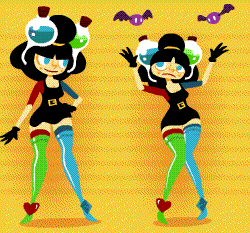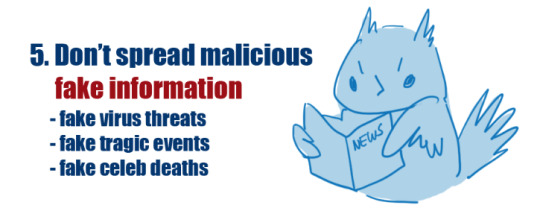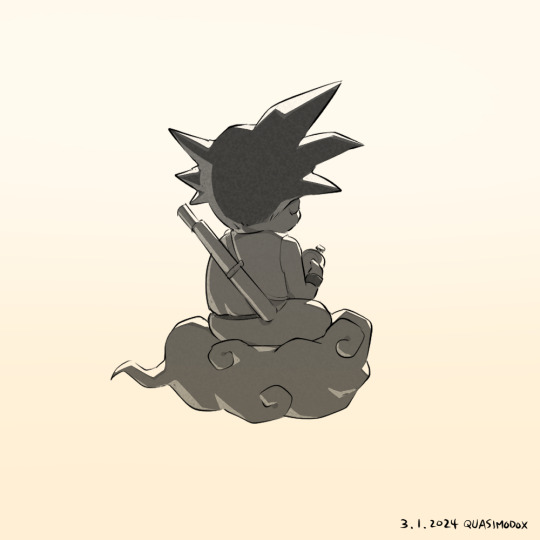Text
76K notes
·
View notes
Text

Peeling space potatoes, scrubbing pots, etc.
1K notes
·
View notes
Photo

Tried to design a character who wears her Health-bar and Mana-bar as stockings <3
77K notes
·
View notes
Text


#tw snuff#israel#free Palestine#and they keep getting worse#isn't there a ceasefire? doesn't matter they'll just violate it
49K notes
·
View notes
Photo







There’s probably more but these are the ones I can think of at the moment! Please be considerate and don’t play pranks at other people’s expenses!
Have fun everyone!
261K notes
·
View notes
Text

I'm drawing food every day for Lent on patreon, which one's your fave from here 👀
289 notes
·
View notes
Text
Meh
Apologies for the drop-off in reblogs, but I've seen a steady stream of clearly AI-written writing advice posts and I'm not about that garbage.
208 notes
·
View notes
Text
Mastering the Art of Dialogue
Dialogue is the lifeline of any narrative. It brings characters to life, propels the plot, and creates depth in the story. However, writing dialogue that feels real and engaging can be challenging. Here are some tips to help you refine your dialogue-writing skills:
1. Listen to Real Conversations
The foundation of great dialogue is authenticity. Spend time listening to how people speak in real life. Notice the flow of conversation, the interruptions, the ums and ahs, and the unfinished thoughts. Real speech is rarely grammatically perfect or fully articulated. Incorporating these nuances can make your dialogue more relatable.
2. Each Character Should Have a Unique Voice
Your characters should be distinguishable by their dialogue alone. A teenager will speak differently from an elderly person; a doctor will use different terminology than a street artist. Think about their background, education, and personality. These factors should influence their speech patterns, vocabulary, and even the rhythm of their dialogue.
3. Use Dialogue to Show, Not Tell
Dialogue is a powerful tool for showing the reader what’s happening without explicitly telling them. Through conversations, you can reveal your characters' thoughts, feelings, and intentions. For example, instead of narrating that a character is nervous, you could show it through their stammering dialogue or their avoidance of direct answers.
4. Keep It Concise
In real conversations, people often meander through their thoughts. In written dialogue, however, it's important to be concise. Every line of dialogue should serve a purpose, whether it’s moving the plot forward, revealing character, or creating tension. If a piece of dialogue doesn’t add value to your story, consider cutting it.
5. Read Your Dialogue Aloud
One of the best ways to test your dialogue is to hear it. Reading your dialogue aloud can help you catch awkward phrasings or unnatural speech patterns. Better yet, have someone else read it to you. This can provide insight into how your dialogue will sound to your readers.
6. Use Subtext to Your Advantage
Not everything needs to be said explicitly. Subtext—the underlying meaning behind the spoken words—can add depth and complexity to your dialogue. Characters might say one thing but mean another, based on their emotions, relationships, or situations. This layering of meaning can make your dialogue more engaging and thought-provoking.
7. Balance Dialogue with Action and Description
While dialogue is critical, it should be balanced with narrative description and action. This balance helps maintain the pacing of your story and ensures that your scenes are visually and emotionally compelling. Action and description can also provide context that enhances the meaning and impact of your dialogue.
Conclusion
Great dialogue can transform a good story into an unforgettable one. By applying these tips, you can craft dialogue that captures the essence of your characters and engages your readers on a deeper level. Remember, writing is a craft that improves with practice. Keep experimenting with your dialogue, and don't be afraid to rewrite until it sounds just right.
Writing dialogue is a skill that can be honed over time. The more you practice and read, the better you'll become at capturing the essence of conversation on the page.
1K notes
·
View notes
Text

109K notes
·
View notes
Text

Thavu: But as a Harpy! The angriest little kestrel.
I had originally posted a version of this on twitter a bit ago and then was immediately displeased with the wings. So I did a 15+ hr study about it I guess!
Bonus little progress shots below if you're into that kind of thing, watch me learn how many feathers are in a birds arm

PATREON
431 notes
·
View notes
Text

I've still got Gargoyles on my brain. Please know that my heart belongs to The Trio and the single brain cell they share.

535 notes
·
View notes
Text

Akira Toriyama is an inspiration to many, myself included. Many people I know have yelled like Goku turning into super saiyan as kids. It was an irreplaceable memory.
5K notes
·
View notes
Text

made a new header for tumblr! this time with some of my favorite dc characters ;)
1K notes
·
View notes



